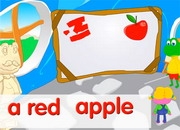Classroom Commands: Sit down / Stand up ESL Video
- Topic: Commands Used in the Classroom
- Communication Objectives: To understand and follow orders that are given in the classroom.
- Language Objectives: To be able to give commands using the imperative form and to be able to follow those same commands.
- Vocabulary: orders - sit, stand, hands, clap, stamp, feet, up, down
- Sentence Structures:
- Sit down.
- Stand up.
- Clap your hands.
- Turn around.
- Grammar: In this lesson, imperative sentences are spoken to give direct orders and requests. The children in the video are given orders to follow. They follow the commands of the teacher. These commands will end in either a period or an exclamation mark.
- Stand up. Sit down.
Unit 1 of ESL/EFL is designed to teach young learners how to understand and respond to different classroom commands. This unit focuses on teaching essential action verbs that students will need throughout their English study life.
One of the objectives of this unit is to teach students how to give and follow orders using short phrases in the imperative mood. This is an important skill that they will use not only in the classroom but also in their everyday lives.
In addition to learning essential verbs and giving and following orders, this unit introduces the concept of TPR (Total Physical Response) as a language learning method. This method encourages students to learn by using their bodies and engaging in physical activities while learning language.
TPR is a fun and interactive approach to learning English and is used in future lessons to help students learn new vocabulary and grammar concepts. It's a great way to keep young learners engaged and motivated while learning a new language.
Overall, Unit 1 is a critical lesson for ESL/EFL students as it teaches them important skills they will need throughout their English study life. By the end of this unit, students will be able to understand and respond to different classroom commands, use essential action verbs, and give and follow orders using short phrases in the imperative mood. The introduction of TPR as a learning method also sets them up for future language learning success.










